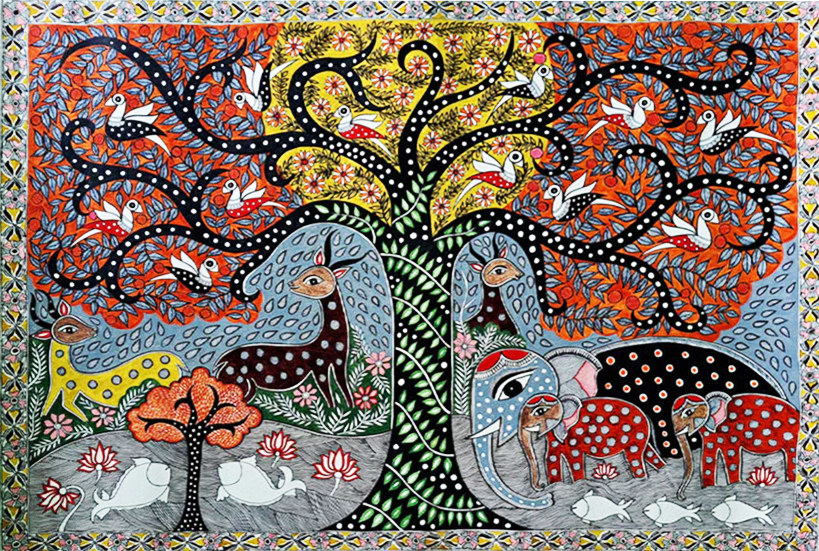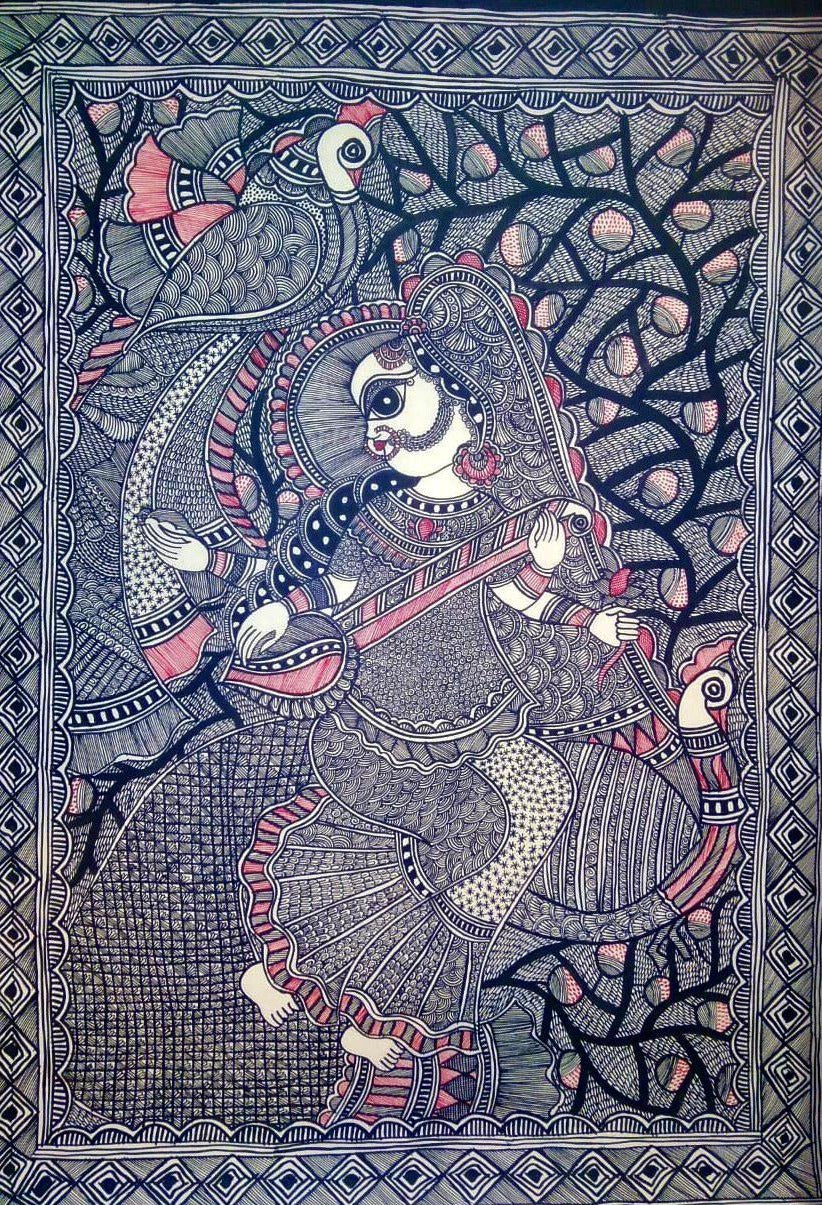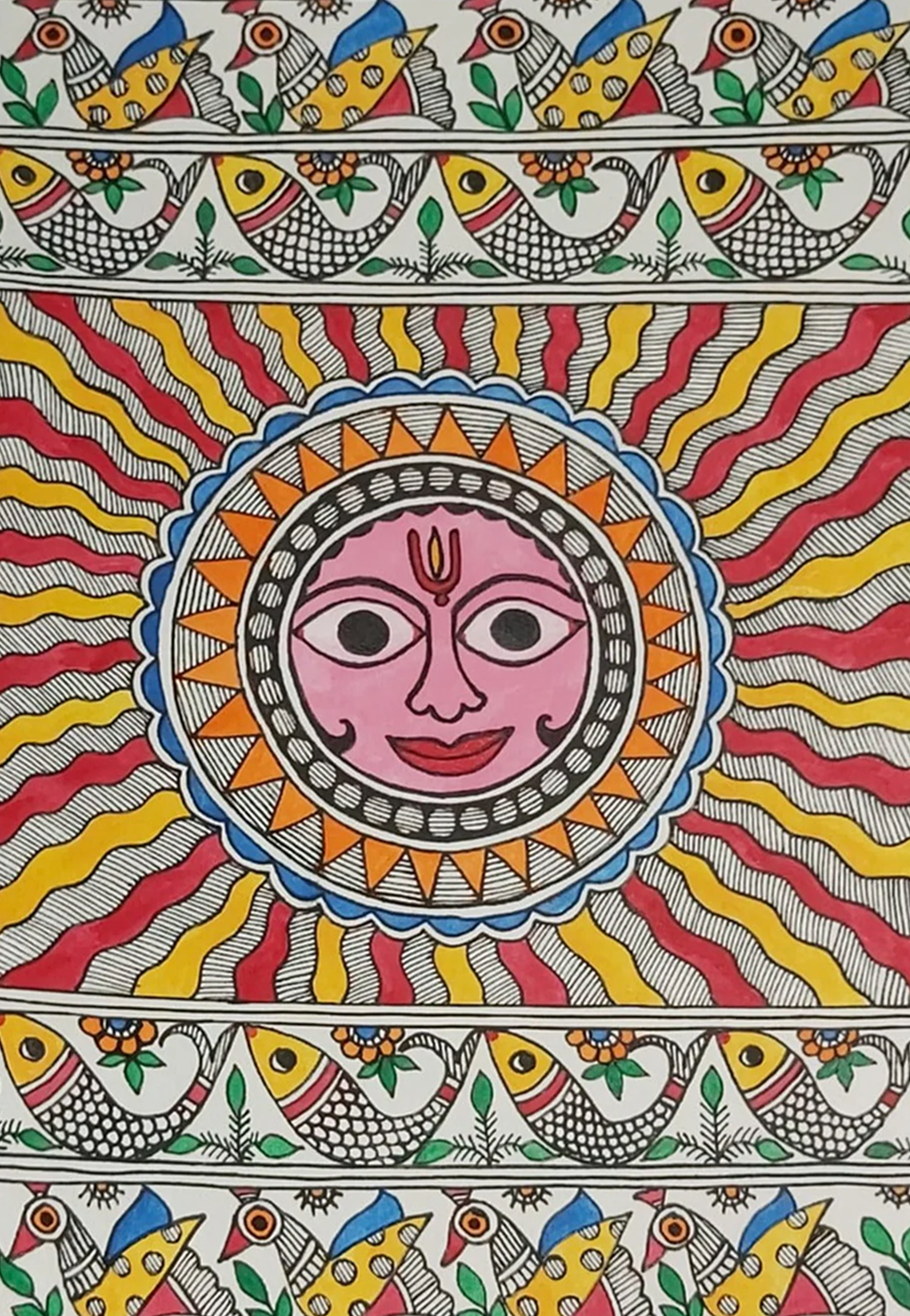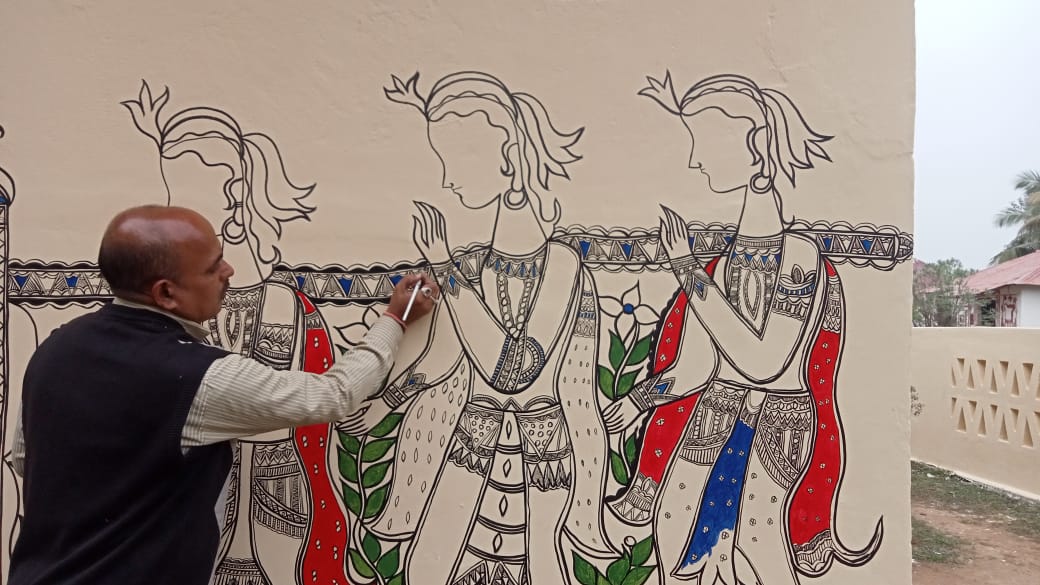EMI available: Pay in installments with your preferred Credit/Debit cards.
Dimensions : H: 22 (in) by W: 30 (in)
Medium : Natural Colors on Khadi Recycled Paper

- HANDMADE
ARTWORKS

- INTERNATIONAL
SHIPPING

- AUTHENTIC &
SUSTAINABLE

- SECURE
CHECKOUT

- WARRANTY

- CELEBRATE
ARTISANS
![]() Earn upto 17,000 Points on purchase of this product.
Earn upto 17,000 Points on purchase of this product.
![]() Get upto 10% OFF on Live Workshops when sign up for 2 or more workshops.
Get upto 10% OFF on Live Workshops when sign up for 2 or more workshops.
![]() Get 10% OFF coupon code for Art Kits signing up for Masterclass or Live Workshop.
Get 10% OFF coupon code for Art Kits signing up for Masterclass or Live Workshop.
About the Artwork +
In Vibhuti Nath's Madhubani painting, the majestic elephant commands attention as it gracefully occupies the central space, embodying strength, wisdom, and grace. The elephant motif holds deep cultural significance in Madhubani art, symbolizing power, prosperity, and good fortune. Its prominent presence signifies a reverence for nature and the animal kingdom, reflecting the harmonious relationship between humans and wildlife in traditional Mithila culture. Surrounding the elephant, a delicate border of intricately drawn fishes unfolds, enhancing the composition with their fluid movement and vibrant colors. In Madhubani art, fish motifs symbolize fertility, abundance, and continuity of life. They serve as a protective barrier, framing the central theme of the painting while infusing it with symbolism of renewal and prosperity. The juxtaposition of the elephant and fish motifs within Nath's artwork creates a harmonious balance between strength and delicacy, power and grace. Together, they weave a narrative of abundance, resilience, and interconnectedness with nature, echoing the enduring themes of Madhubani tradition. Through Nath's skillful portrayal of these iconic motifs, the painting not only captivates the eye but also invites viewers to contemplate the timeless wisdom and cultural heritage embedded within Madhubani art.
Madhubani art, also known as Mithila painting, is a traditional art form originating from the Mithila region of Bihar, India. This centuries-old practice is characterized by intricate patterns, vibrant colors, and symbolic motifs, often depicting scenes from mythology, nature, and daily life. Artists use natural pigments and brushes made from twigs, creating visually stunning compositions on various surfaces such as cloth, paper, and walls. One of the distinctive features of Madhubani art is its rich symbolism. Each element and motif holds deep cultural significance, conveying messages of fertility, prosperity, spirituality, and harmony. The designs are typically symmetrical and geometric, with bold outlines and intricate detailing that captivate the viewer's attention. Traditionally, Madhubani art was passed down through generations of women within the community, serving as a form of cultural expression and storytelling. However, in recent times, both men and women have embraced this art form, contributing to its preservation and evolution. Beyond its aesthetic appeal, Madhubani art serves as a window into the cultural heritage and traditions of the Mithila region. It reflects the values, beliefs, and rituals of the community, offering insights into their way of life. As it continues to garner global recognition, Madhubani art remains a testament to the timeless beauty and cultural richness of India's artistic heritage.
Authentication +
Each of our artworks are hand painted by master artists across India. We provide a digital authentication certificate with this artwork signed by the artist which will be sent over email after 3-4 days of delivery of the artwork.
Sizes, Framing and Customisation +
The sizes mentioned are excluding the borders of the artwork.
Frames shown are for visual representation only and are not included with the artwork. We offer framing services on demand at additional costs. If you wish to get your artwork framed, please reach out to us on WhatsApp or email.
We take custom artwork orders, please use the WhatsApp chat below or email us at wecare@memeraki.com to discuss your requirements in more detail.
Shipping and Taxes +
We ship worldwide, Our Prices are inclusive of GST/Taxes in India. For international orders, any specific custom duties you may encounter in your home country during the delivery has to borne by the buyer.
For all artworks except Lippan and Terracotta, we offer free shipping on orders above ₹999, a ₹249 flat rate is applicable to smaller order amounts.
For international artwork orders shipping charges of 4000 INR* are applicable.
For Lippan and Terracotta Artworks, We charge a Shipping rate on a per Kilogram basis.
*Extra charges may apply for both domestic and international deliveries in the following cases:
- International artwork orders where the artwork's smaller side measures more than 36 inches.
- Extra charges are applicable for Express Shipping. Contact support to check availability for your order.
- Orders with more than 2 product types in the cart.
Delivery Timelines and Returns +
All artworks are packed and couriered securely in a tube.
Ready To Ship/ In Stock artworks are shipped in under 2 weeks. We only accept return requests for Ready to Ship/ In stock artworks placed within a week from date of delivery. However, no returns can be accepted for international deliveries.
Made To Order artworks will take 2-3 weeks to be made and shipped once they are ready. Returns are not applicable on Made To Order artworks.
Once your order is placed, our team will stay in constant communication with the artist to track the progress and ensure the quality of your order. You will receive regular updates from us throughout this process.
Colour Disclaimer+
All artworks on the website are hand painted from scratch by our master artists. This makes every artwork absolutely unique and the actual colour and overall artwork may vary slightly from the artwork image posted here.






 Share
Share






















